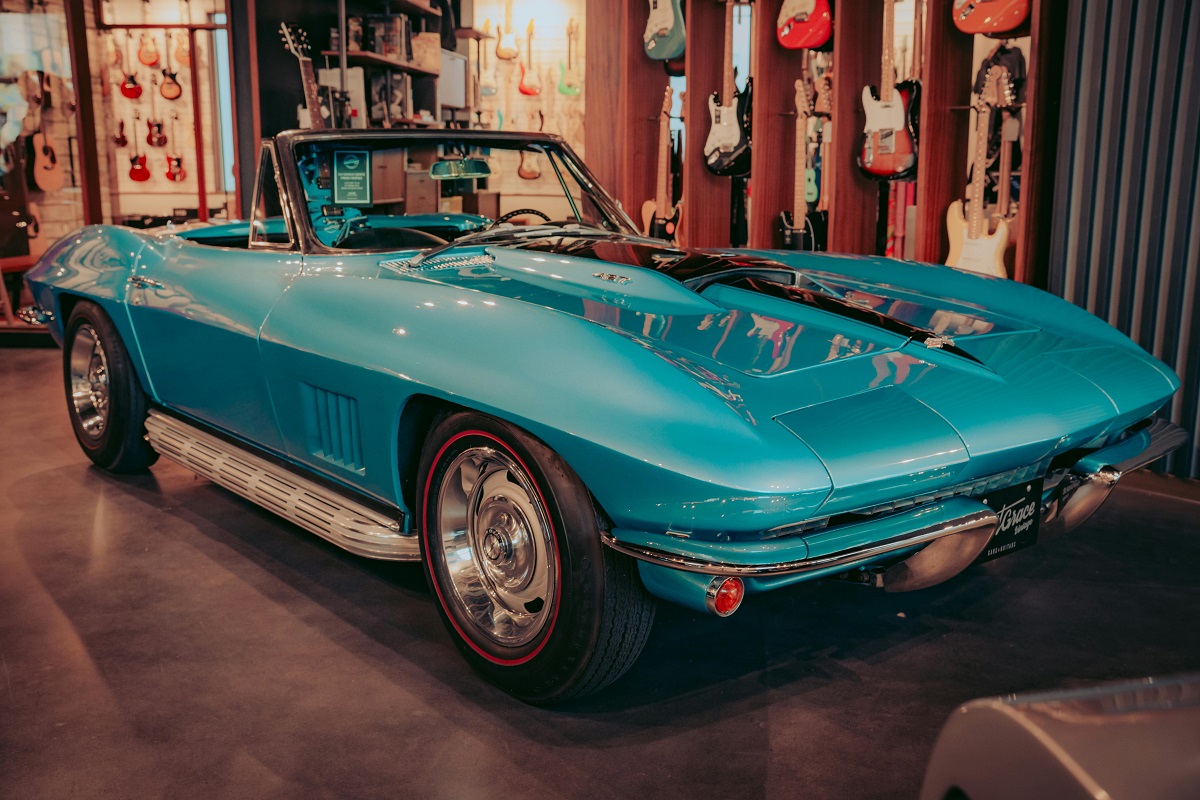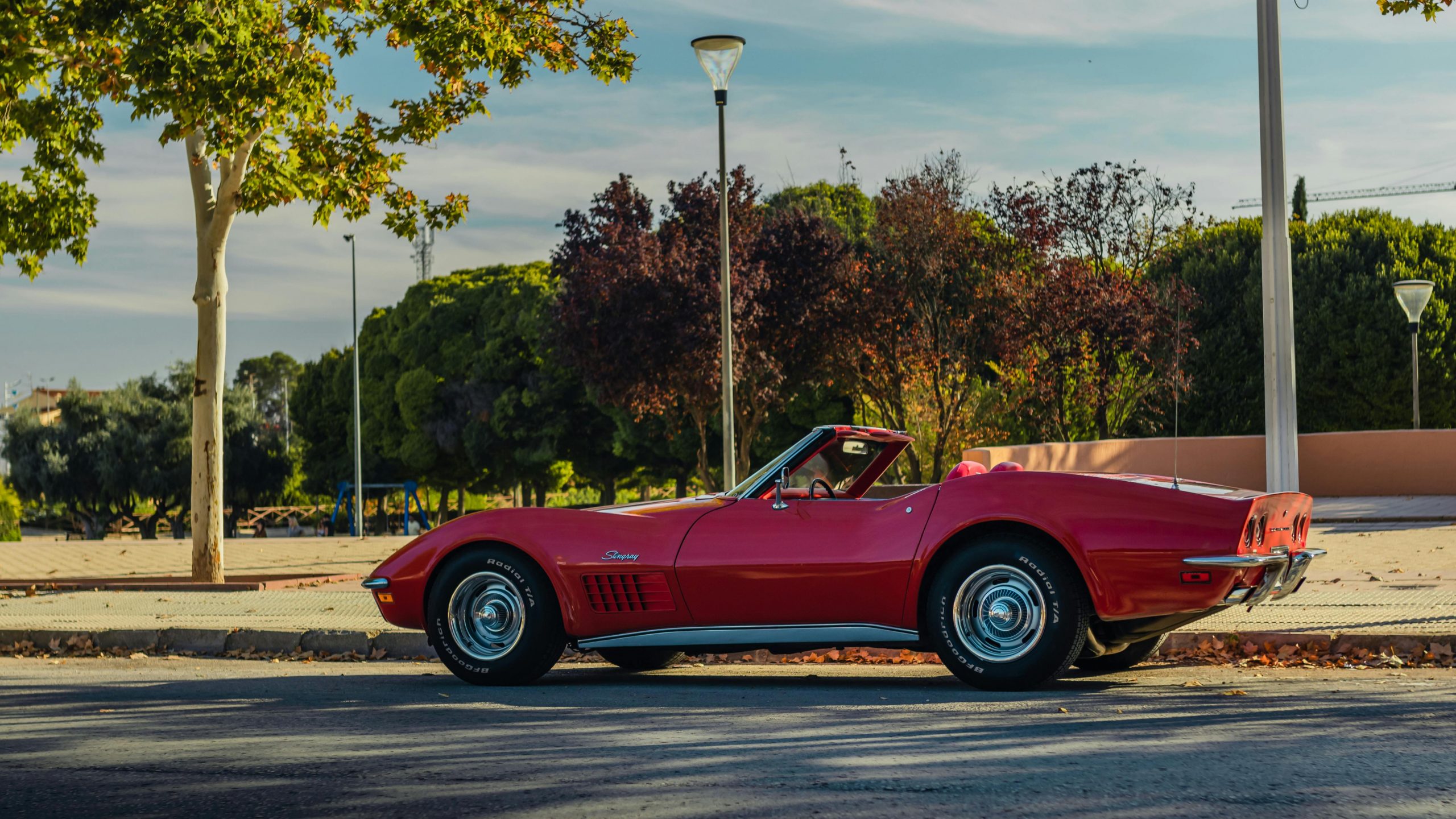
The Chevrolet Corvette has long been a symbol of American performance and luxury, but when it comes to categorizing it, many car enthusiasts wonder: is the Corvette a muscle car? Muscle cars are known for their raw power, aggressive styling, and American roots. But the Corvette stands apart with its distinct design and engineering. Let’s dive into the details to understand whether the Corvette qualifies as a muscle car.
What Defines a Muscle Car?
Let’s begin by answering: What is a muscle car? Understanding this will help us classify the Corvette. Muscle cars are typically characterized by the following:
- Powerful Engines: A muscle car usually comes with a large displacement engine, often a V8.
- Aggressive Styling: Muscular body lines and bold, eye-catching design elements.
- Affordable Performance: Muscle cars were initially designed to be fast yet relatively affordable for the average American.
- Rear-Wheel Drive (RWD): Most muscle cars have RWD to maximize power delivery to the road.
- American Heritage: Muscle cars are a product of American automakers, designed to offer performance on par with European sports cars but with a distinctly American feel.
Some of the most iconic muscle cars include the Ford Mustang, Dodge Charger, and Pontiac GTO. These cars embody the muscle car ethos with powerful engines, a focus on performance, and a price point that made them accessible to the average American.
The Corvette’s History: Performance with a Twist

The Chevrolet Corvette debuted in 1953 and quickly became one of the most iconic American cars. But unlike the typical muscle car, the Corvette was designed from the outset to be a sports car—focused on handling, performance, and elegance. So, how does it compare to the classic muscle cars?
Corvette’s Early Years: The Birth of a Performance Icon
Design and Engineering:
The original Corvette wasn’t necessarily built for raw power like muscle cars. It was designed to be sleek and agile with a focus on European sports car aesthetics. The early Corvette models were equipped with relatively small engines, including a straight-six engine that wasn’t as powerful as the V8 engines found in classic muscle cars.
Performance Focus:
The Corvette’s primary focus was on handling and road course performance—it was about more than just speed in a straight line. Muscle cars, in comparison, were often built for quarter-mile runs and a different style of performance.
The Corvette and the Muscle Car Era
In the 1960s, the Corvette started to gain more power and performance, with the introduction of more potent V8 engines like the 427 and 454 cubic inch V8s. This performance upgrade brought the Corvette closer to what was seen in muscle cars, but it still maintained a distinct identity. Even as the Corvette gained muscle car-like power, it retained its role as a sports car rather than a raw muscle car.
Corvette vs. Muscle Car: Key Differences
Engine Power and Performance
While many muscle cars rely on brute force and a big engine for performance, the Corvette’s approach is more about a balanced combination of power, handling, and agility. Some of the key distinctions between a Corvette and a classic muscle car include:
Horsepower:
Classic muscle cars often relied on a larger V8 engine for high horsepower. Corvettes, while packing a punch with powerful engines, have been designed to provide a more refined driving experience.
Handling:
Muscle cars tend to prioritize straight-line speed over cornering capabilities, while the Corvette’s suspension and handling are designed for both straight-line speed and superior agility on winding roads and tracks.
Top Speed and Acceleration:
While some muscle cars might beat the Corvette in raw acceleration or top speed, the Corvette’s performance on the whole is better-rounded. It shines on track days, where handling and balance are just as important as speed.
Design and Aesthetics
Body Style:
Muscle cars often feature bulky, aggressive designs with wide, powerful stances. The Corvette, on the other hand, is sleek, low-slung, and aerodynamically designed with a focus on aesthetic appeal and lightweight construction.
Interior:
The interior of a muscle car is usually more utilitarian, focusing on the essentials, while the Corvette offers a luxurious interior, complete with fine materials and modern tech, aligning more with the traits of a sports car than a traditional muscle car.
Price and Exclusivity
Price Point:
While classic muscle cars were relatively affordable for the average American consumer, the Corvette has always been marketed as a more premium sports car with a higher price tag. In recent years, the Corvette has become more accessible with models like the C8, but it still doesn’t quite match the budget-friendly nature of a traditional muscle car.
Limited Production:
The Corvette is often produced in lower quantities than most muscle cars, adding to its sense of exclusivity and rarity.
Why Some Consider the Corvette a Muscle Car

Despite its sports car roots, there are several reasons why people might classify the Corvette as a muscle car:
Power and Performance
Corvettes, especially in recent years, come equipped with muscle car-level engines. The Corvette Z06 and Corvette ZR1, for example, pack supercharged V8 engines that can produce more than 650 horsepower, which easily places them within the realm of traditional muscle cars in terms of performance.
American Roots
The Corvette is proudly made in America and has a long history of performance and power. It shares a common heritage with other American muscle cars, making it easy for enthusiasts to draw comparisons.
Popularity and Icon Status
The Corvette has reached an iconic status in American automotive culture, much like classic muscle cars such as the Ford Mustang. It is a symbol of American engineering excellence, and like many muscle cars, it has captured the hearts of performance car enthusiasts worldwide.
The Verdict: Is a Corvette a Muscle Car?
While the Corvette shares several attributes with muscle cars, including its powerful engines and American heritage, it is not a muscle car in the traditional sense. The Corvette is better classified as a sports car due to its emphasis on handling, aerodynamics, and luxury features, in contrast to the raw power and aggressive styling associated with muscle cars.
That being said, there are moments in Corvette history where the car has blurred the lines between muscle car and sports car. The more recent iterations, such as the C7 and C8 Corvettes, certainly have the muscle car spirit with their enormous horsepower numbers and aggressive performance. However, its overall design, handling, and refinement suggest that it remains a sports car at its core.
Conclusion: The Corvette’s Unique Position in Automotive History
While the Corvette possesses many qualities that overlap with those of classic muscle cars, it is not strictly a muscle car. It has evolved into something far more sophisticated, blending American muscle with sports car agility. Whether you’re a fan of muscle cars or a dedicated Corvette enthusiast, there’s no denying that the Corvette has earned its place as one of America’s most beloved performance vehicles.
